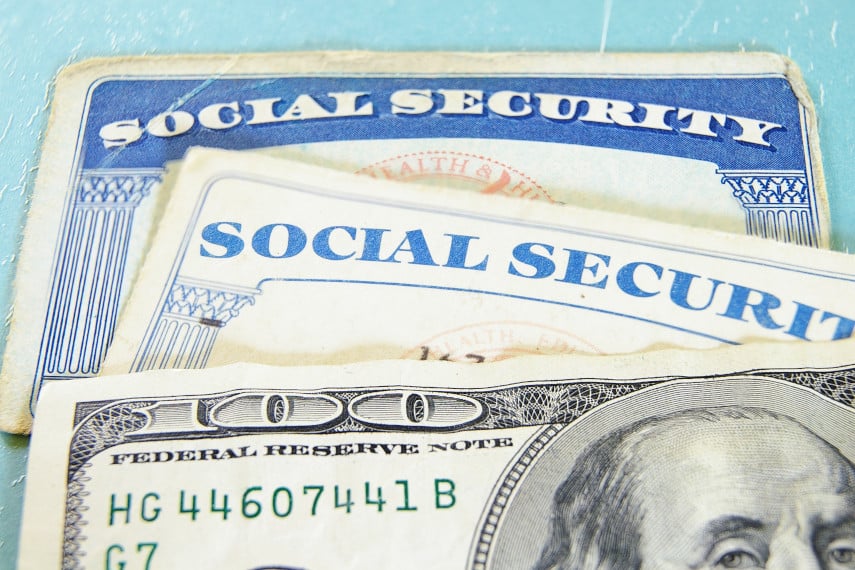Why Does Gold Have Value?
If you’ve done any reading about investing in gold, you’ve probably read that one of gold’s characteristics is its intrinsic value Of course, from the perspective of pure economics, nothing has...
Goldco Precious Metals Blog

Ask most Americans what the bedrock of the American retirement system is and you’ll probably hear that it’s Social Security. For over 80 years, the Social Security system in the US has helped provide American retirees with money in retirement. But far too many retirees have begun to depend on Social Security for a more and more significant portion of their retirement income. And in a few short years, they may no longer be able to depend on that income.
Social Security was never intended to be a sole source of income for retirees, or even a major source of income. It was only intended to be supplemental income, to keep people from being completely destitute in their old age. But because of the way the system was structured, early recipients of Social Security income received far more Social Security income than they ever paid in Social Security taxes, making it seem as though the program could offer a significant source of income in retirement.
The Social Security system’s numerous financial problems have required many fixes along the way. Social Security taxes have increased continuously over the past decades, while benefits have been decreased. But there’s a limit as to how low those benefits can be decreased before disgruntled retirees turn out at the polls to turn out benefit-cutting politicians. And so the system is slowly creaking toward a financial crisis out of which there may be no return.
Over the years that the Social Security system has existed, it has periodically taken in more money in taxes than it pays out in benefits. Those excess funds are invested in interest-bearing non-marketable Treasury securities, with the money then being sent back to the Treasury Department to be spent on other things. The securities are held in a trust fund, and the interest made on those securities is added to the fund as well.
Social Security’s total benefits paid has long exceeded what it takes in from payroll taxes. And now the total benefits paid exceeds both its tax income and its interest income combined. That means that the Social Security trust fund is being drawn down and will eventually disappear.
Last year, the Social Security trustees expected the Social Security trust fund to be fully depleted by 2034. Thanks to reduced tax income as a result of the COVID lockdowns, that estimate has now been moved up to 2033. In other words, in 12 years the Social Security trust fund could be at zero.
At that point Social Security will be unable to pay out 100% of its expected benefit payments. In fact, current estimates are that Social Security will only pay out about 76% of expected benefits by 2033. Are you ready to accept a nearly 25% hit to your Social Security retirement income?
Even worse, these estimates seem to get worse every year. Just about every year the depletion date is moved forward and the estimated level of benefits decreases by a few percentage points. At the rate things are going, by 2025 we might expect Social Security to go bankrupt within five years, and for expected benefit payments to fall to below 70%.
If you’re age 65 today, you can expect to live until about 2040. That means that you could face a good 10 years of a 25-30% or greater reduction in your expected Social Security income, at a time in your life when you will likely need every penny you can get your hands on. Are you prepared for that?
If you’re over 75, you may get “lucky” and not feel the negative impact of a bankrupt Social Security system before you die. But if you’re nearing retirement or already retired, in the 55-65 age group, you’re likely going to feel the impact in a big way, particularly if you planned on depending on Social Security income for a large portion of your retirement income.
Younger age cohorts are also in a tough spot, as the financial situation of Social Security will become worse over time unless either benefits are reduced or taxes are increased. Without changes to shore up the system, those under 45 may very well see Social Security payments wither away into a mere pittance, or perhaps disappear completely.
Thankfully we have received plenty of warning of Social Security’s eventual demise. With Congress seemingly unwilling to fix the system, it seems all but certain today that retirees will see a forced reduction in their benefit payments. But you have at least a decade to help prepare you against that eventuality.
That gives you plenty of time to assess your retirement plans, assess the state of your retirement savings, and adjust your assets accordingly to help safeguard your retirement income. One way you can do that is by investing in precious metals like gold and silver.
Social Security income is all but guaranteed to decline over time, which isn’t exactly what you want to see when you’re no longer bringing in a salary and are depending on your retirement savings for income. In contrast, gold and silver offer the potential for asset growth in the future. Their long-term price growth has been on par with stock markets, while over the past 20 years they have exceeded the performance of stock markets.
There are numerous options when it comes to investing in gold and silver. One of those is direct purchases of gold and silver coins or bars. Anyone can buy them, and you can choose to store them at home, in a safe deposit box, or with a precious metals depository. These precious metals coins can come in handy when you need income in retirement, as gold and silver markets are highly liquid.
If you have retirement savings in tax-advantaged retirement accounts that you want to protect, such as in a 401(k), TSP, IRA, or similar account, you can invest in a precious metals IRA. A gold IRA or silver IRA allows you to invest in physical gold and silver coins or bars while still enjoying the same tax advantages as your current retirement accounts.
You can even roll over or transfer assets from your existing retirement accounts into a precious metals IRA tax-free. That allows you to protect your existing investment gains while putting you in a position to benefit from future growth in the price of gold and silver. And when you choose to take a distribution, you can take it either in cash or in precious metals, allowing you to continue owning gold and silver even after you take required minimum distributions.
With the outlook for the economy not looking that great, gold and silver are poised for significant growth in the coming years. And with Social Security looking more and more like it might not be around in the coming decades, it’s no surprise that more and more Americans are turning to gold and silver to help safeguard their savings.
Goldco has helped thousands of Americans just like you to help safeguard their retirement savings with gold and silver. Contact our precious metals experts today to find out how you can protect your dreams of retirement with gold and silver.

